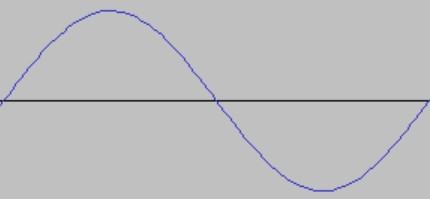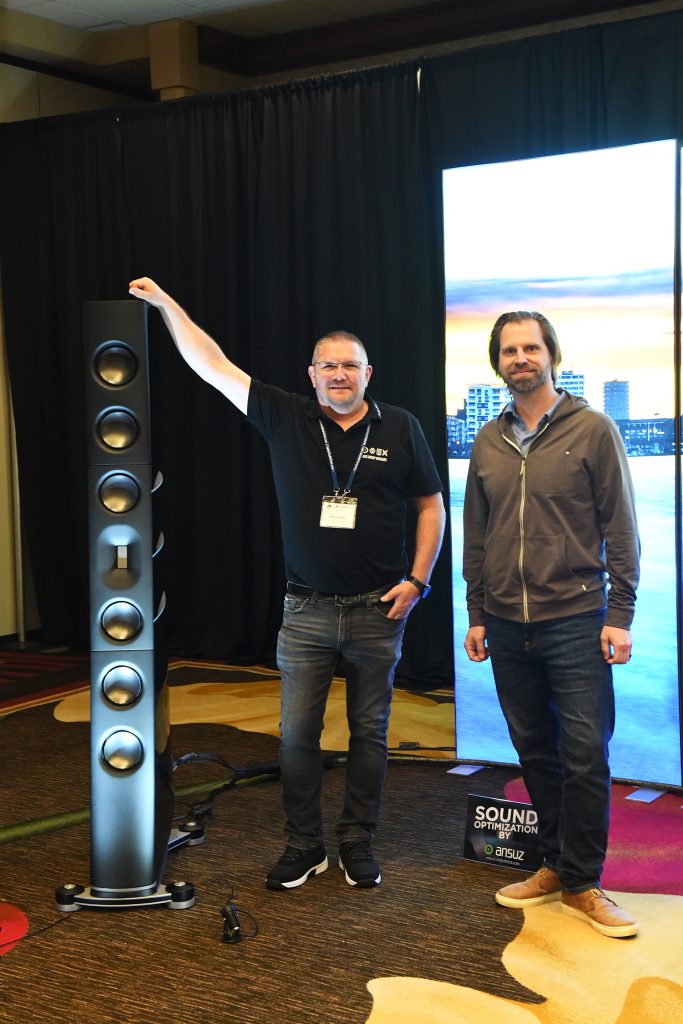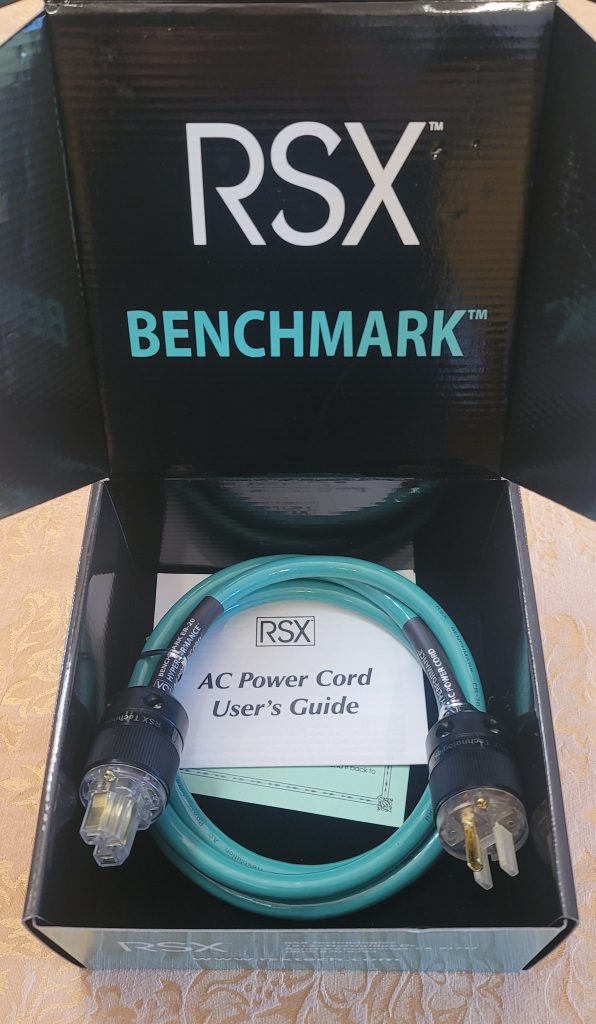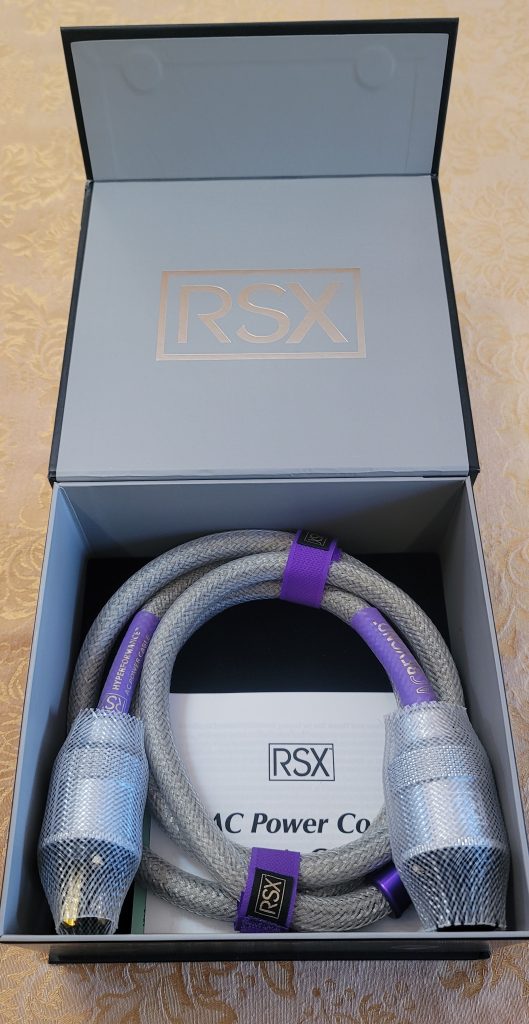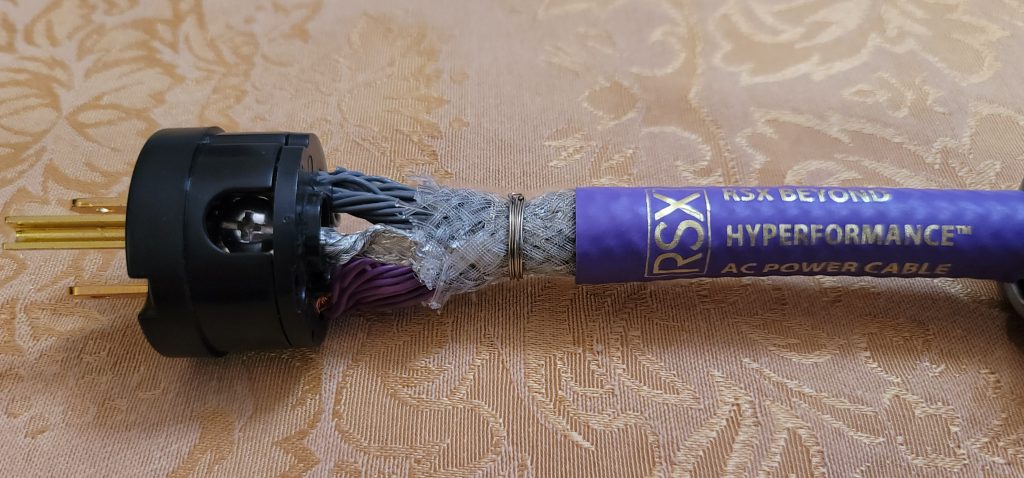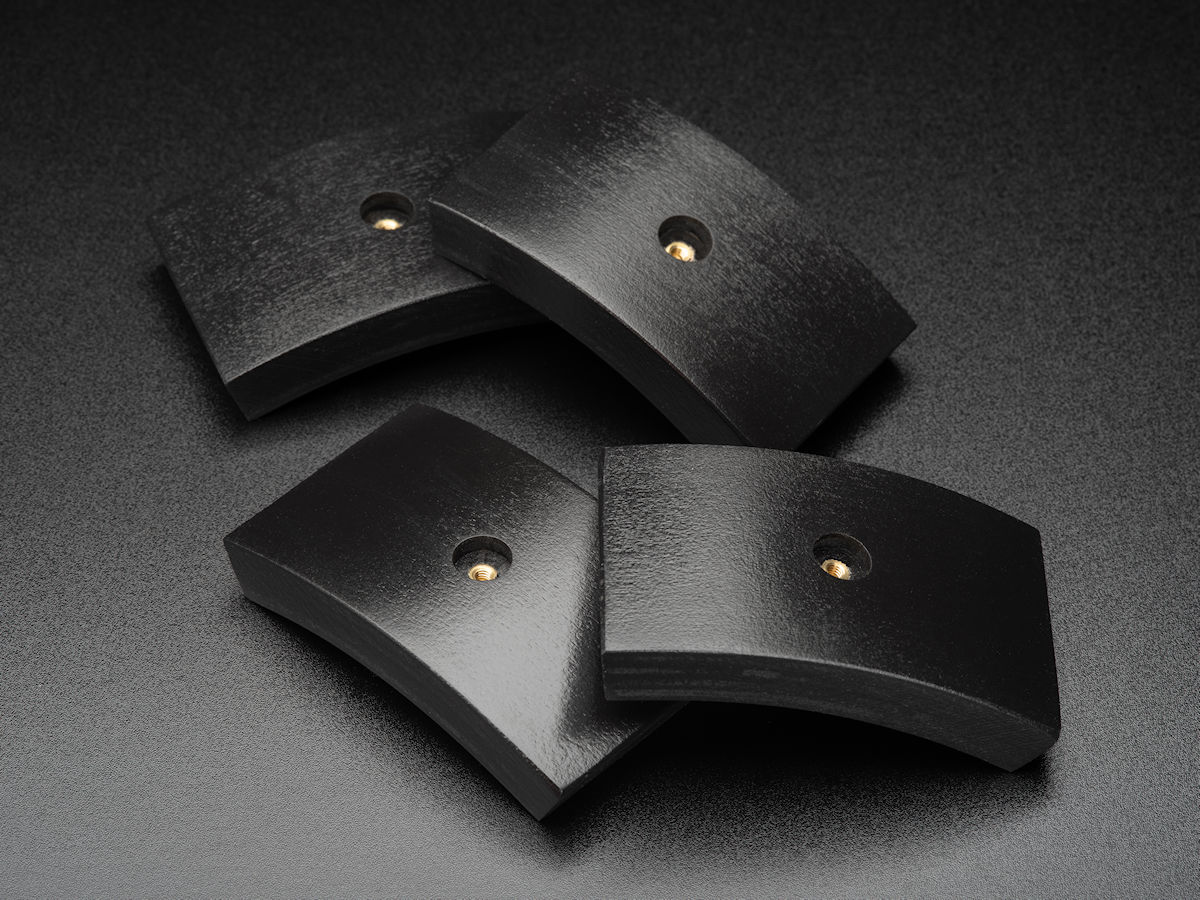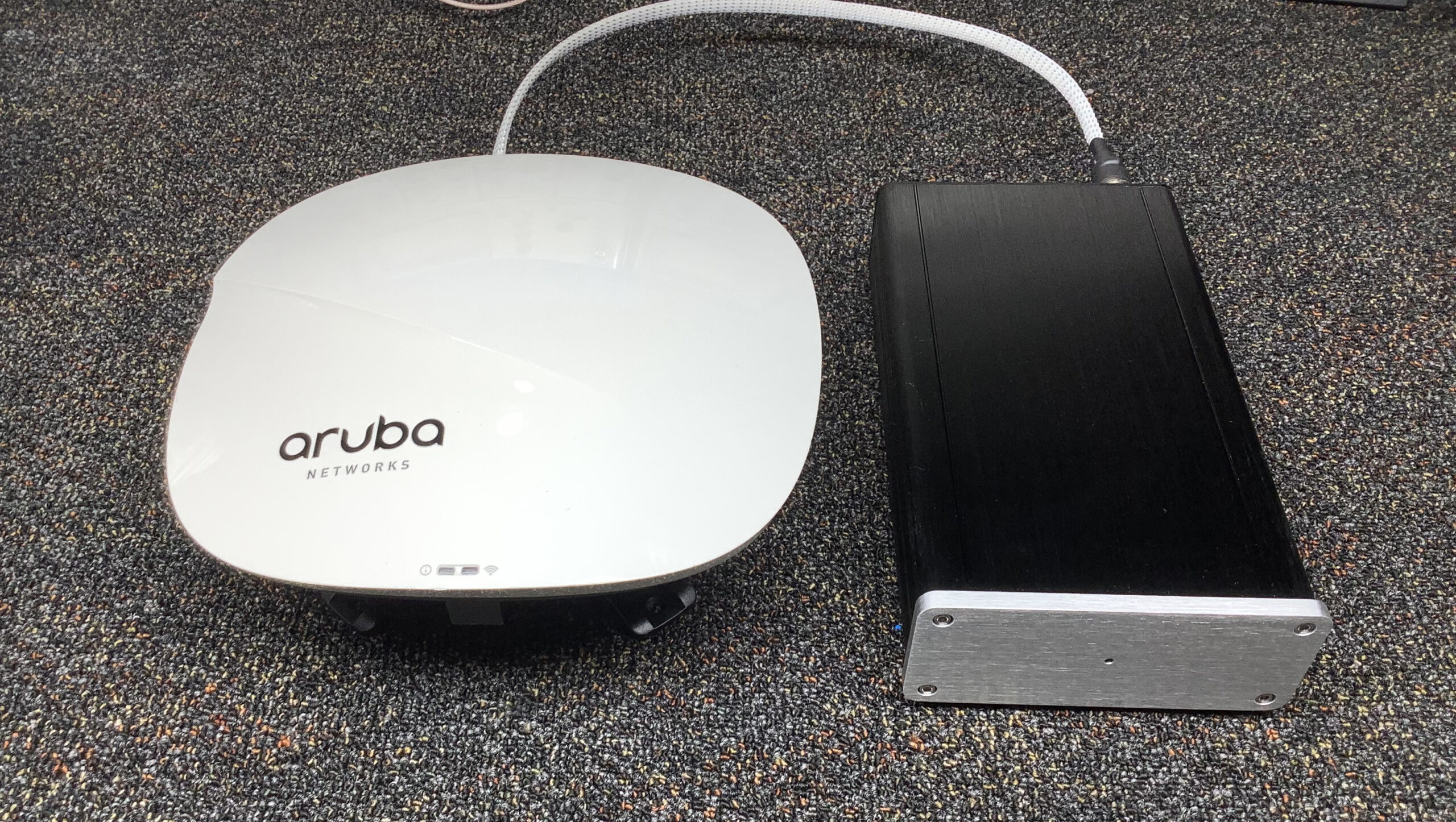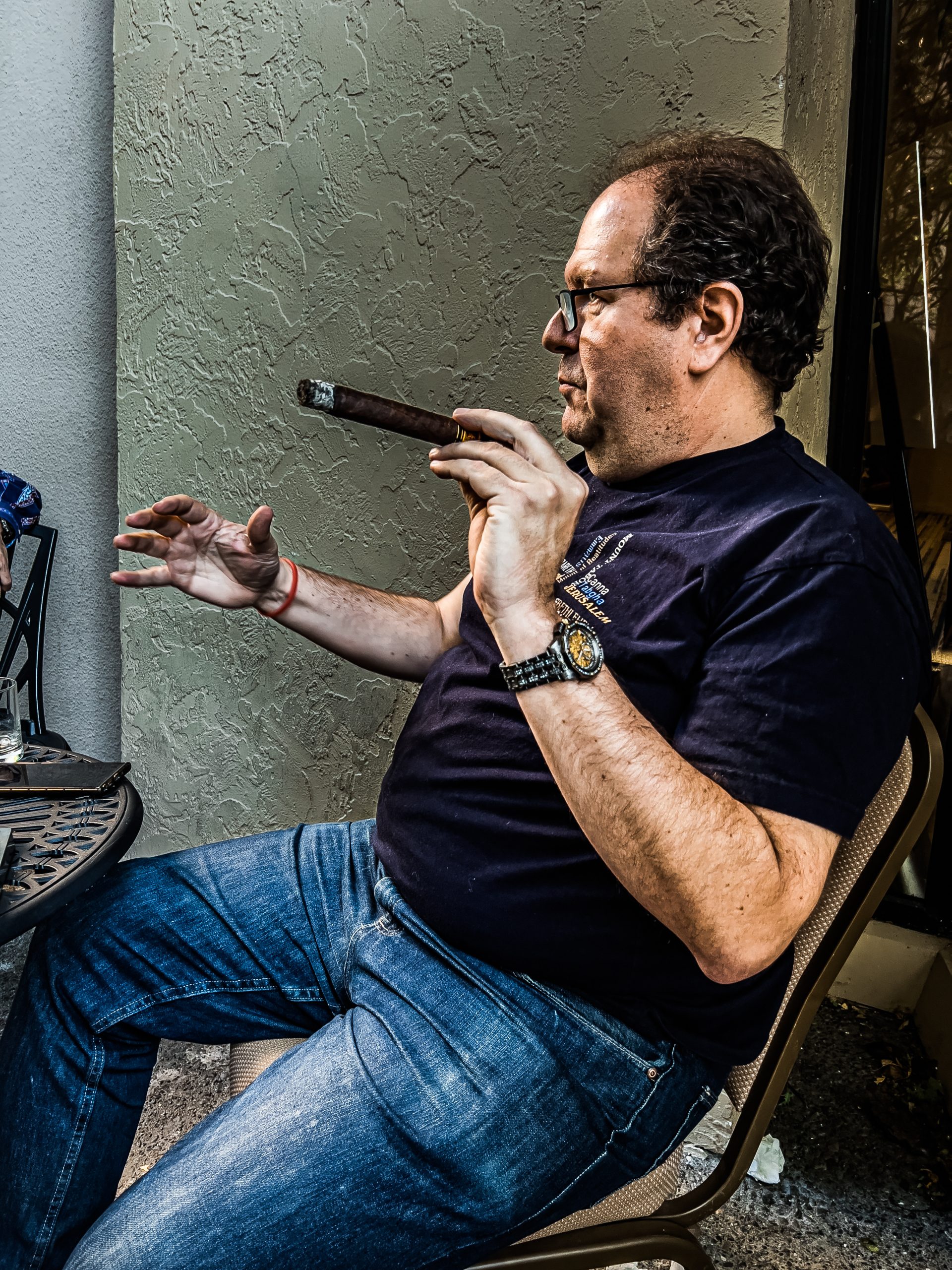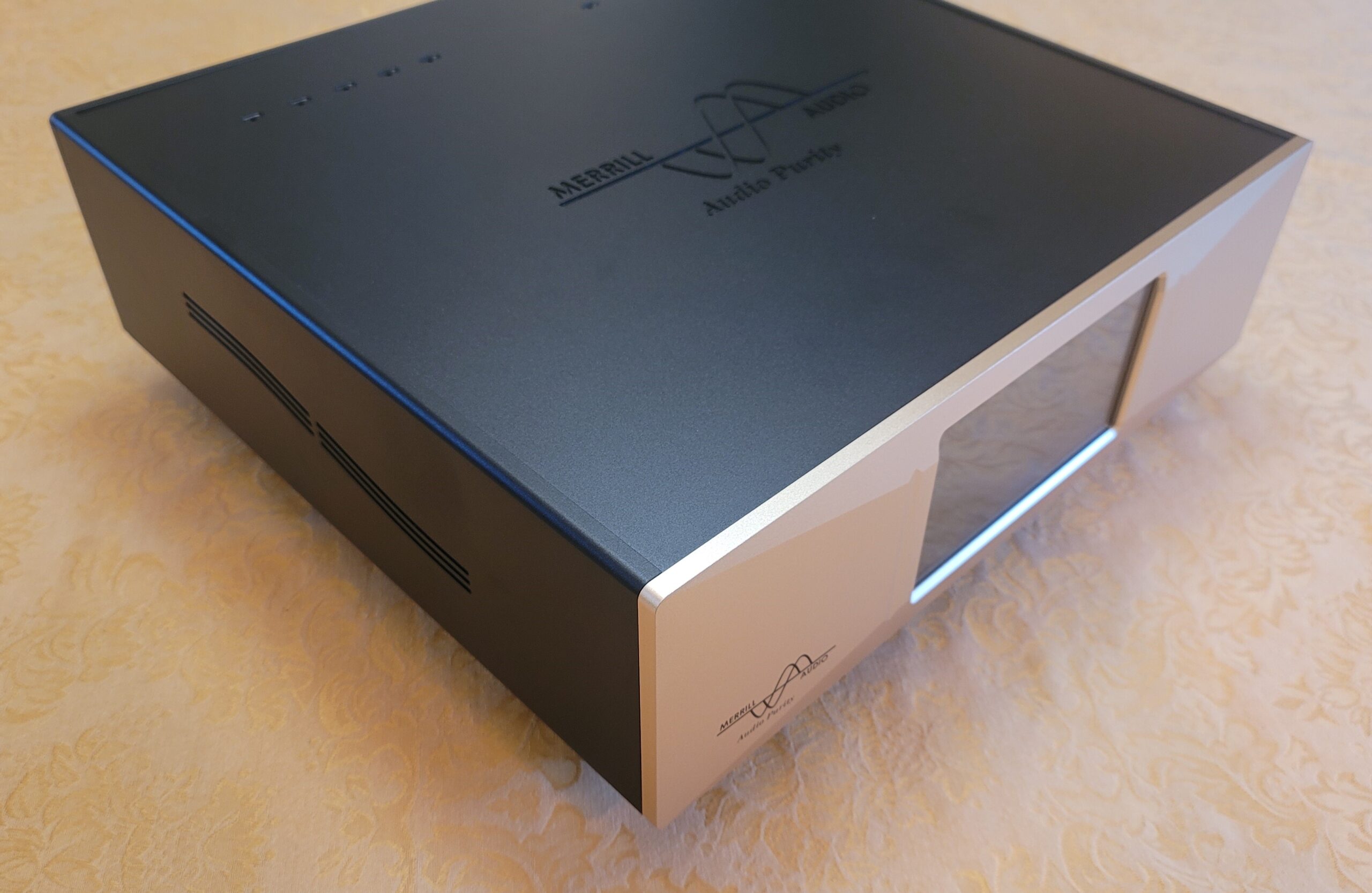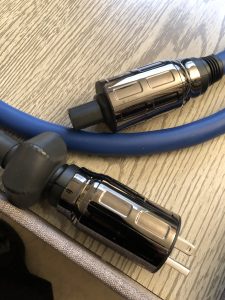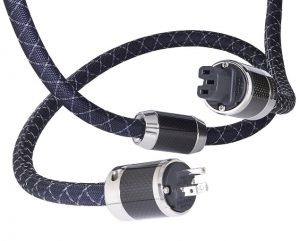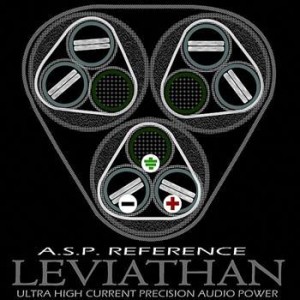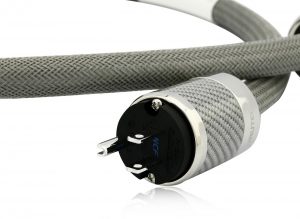Dean Waters at Pacific Audio Fest 2023 (photograph and image processing by David W. Robinson)
Serious listeners of high-end and high-resolution audio generally agree that cables matter. When spec'ing the various components we look to buy and install, we also give consideration to the cables that will connect it all together. We tend to focus primarily on analog interconnects, at least to start. We upgrade our speaker cables, then our RCA interconnects, followed by digital connections. We tend to neglect power in all of this. Often we simply treat power as an afterthought, with a consensus being that so long as you have a decent filtering surge-suppressor, you're basically "done."
I think it's time to give power delivery the respect it deserves. After all, it's the genesis of everything we do. No power, no sound!
What does the power 'look' like when it arrives at the wall outlet in your listing room? Depending on where you live it should look like a pure sine wave somewhere between 110v and 240v, alternating at either 50Hz or 60Hz. In practice, it doesn't quite look like this, unless you happen to live at (or very near) your local utility distribution station. And even then, by the time the voltage is stepped down from utility voltage to home-use voltage, the sine wave you get is hardly pristine. There are solutions for that (and good ones, too!). But how about getting the power from the wall, or your power filter, or (even better) from your power regeneration unit to your gear? The last thing we want to do is further complicate matters and make the power more dirty with our power cables.
Roger Skoff of RSX Technologies (photograph and image processing by David W. Robinson)
This is where Roger Skoff and his team at RSX Technologies comes to the rescue. Roger and his company create a range of products designed specifically to let you "listen to the music, not the cables." The power cables in particular is what I aim to focus on here.
Remember that everything metal is an antenna of sorts. A principal goal in our re-creation of recorded music at the high-end level is to eliminate distortions and unintended harmonics. Cables are imperfect mediums. Each cable and connection we use can readily introduce artifacts into the wave forms we are trying to convey from one component to another. Worse, whenever current flows through a cable, it creates its own distortion that can affect nearby cables and components. Take a look behind your stack of audio gear, and what do you see? A maze of cables that both creates and receives electromagnetic interference (EMF) and RFI. This interference manifests itself as distortions of the signal.
Distortion produces harmonics. Harmonics are what provide timbre and color to sound. Without timbre we wouldn't be able to tell a violin from a pipe organ. Intended (music) sounds consist of a fundamental frequency (the pitch of a note being played) and a series of partials (overtones) that resonate at whole-number multiples above the fundamental frequency. The strength of each partial (harmonic/overtone) relative to the fundamental is what provides timbre. That's beauty. That's art. Distortion is the introduction of unwanted harmonics. These unwanted harmonics do NOT resonate at whole-number multiples of any desired frequency. At lower frequencies, these harmonics color the sound and add their own timbre to the sound that has nothing to do with the music. These distortions in turn create their own partials that are presented to the listener as high frequency noise.
What to do? Wouldn't it be great if we could shield the power cables from receiving unwanted electromagnetic interference, and also shield them from leaking interference that would affect other nearby cables? If we could just enclose the power in some kind of Faraday cage…
Well, we can! That's exactly what the RSX Technologies Prime, Max, and Beyond power cables are designed to do. These RSX Tech power cables feature Faraday shielding to prevent EMF and RFI. As you move up the product stack the thickness of the cables increases from 12 AWG to 9 AWG and power handling capacity increases to better handle power hungry (and power sensitive) components.
The problem with cables
Ideally our cables would do "nothing." They move signals—or power—from one place to another, and that's it.
Turns out, that's far easier said than done. One of the problems we deal with in traditional cables is capacitive discharge effects due to the insulation that is commonly used. Different insulating materials absorb and dissipate energy at different amounts and rates. Not only do our cables function as antennas, but they also function as capacitors. Think back to when we were kids and we'd blow up a balloon, rub it on the carpet, or a sleeve, the dog, or our heads (back when had hair…). We'd then watch in youthful amazement as the hairs on our head lifted from our scalps and pointed towards the balloon. Turns out both latex and PVC have what's known as a "high dielectric constant." They will hold a considerable amount of electric charge relative to their mass.
Back to the balloon….after several seconds of holding the balloon next to our heads, the hairs slowly fall back into place as the balloon dissipates the stored up energy. This is referred to as "dump-rate." The faster the dump-rate, the faster the material will dissipate a stored charge.
OK, now how does this apply to cables? Most standard cables, especially power cables, are insulated with material that has both a high dielectric constant and a low dump-rate. That's bad. Let's imagine an AC sine wave running through an insulated wire.
The current will start at zero volts and cycle up-and-down 50 or 60 times a second from the maximum positive voltage down to the maximum negative voltage and then back to zero to start the next cycle. At the start of the cycle (0° phase), the voltage will increase from zero towards the maximum (90° phase). At the same time, the cable insulation is also being positively charged. The amount of charge that the cable picks up is dependent on the material used.
Once the sine wave reaches maximum positive charge, the voltage drops towards the negative maximum charge point. Half-way through this positive-to-negative transition the current will pass the zero-point (we are now at 180° of phase). As the voltage turns negative, the positively charged cable now has excess charged energy that it needs to dissipate. Opposites attract, and the current that was stored in the cable during the positive half-cycle of the sine wave is now discharged back onto the cable. The amount of charge (dielectric constant) and the speed of discharge (dump-rate) is what we're interested in.
What's the result? Two things: First, during the positive charge half-cycle, a small amount of current is absorbed into the cable itself. This distorts the sine wave slightly as not all of the current being introduced into the cable is being delivered to the far end of the cable. Second, during the negative charge half-cycle, that stored current is now discharged onto the cable further degrading the purity of cleanliness of the sine wave. Net-net is the charging and discharging of the dielectric substances in the cable insulation distorts the sine wave and thus introduces harmonics and noise.
The solution
The new RSX Benchmark series of cables tackle these problems by using a new and unique insulation that features a low dielectric constant and a high-dump rate. Thus the cable doesn't absorb nor hold much charge to begin with, and the charge that is held is dissipated near instantly when the voltage crosses the zero-point from positive charge to negative charge during each AC cycle. The net result is very little deviation in the shape of the sine wave from one end of the cable to the other. In turn, this allows the Benchmark's to perform exceedingly well, especially relative to their modest price-point.
I do believe that this sets a new standard in high-performance cables at an excellent price. It's no wonder Roger's team at RSX Tech have won numerous Writers' Choice and Brutus Awards from Positive Feedback. Audiokey Reviews have also awarded RSX their highest Diamond award—the first time ever awarded for a cable.
The Sound
Enough theory. How do they sound? I've been trying out the new budget-friendly Benchmark series as well as the top-of-the-range Beyond series of AC power cables. They are magnificent. In a word they sound like… nothing. And I guess that's the best compliment that could be offered.
I have them connected to a KECES S300+ two-channel class A/B hybrid amplifier. The amp is connected to an ifi iDSD Pro Signature DAC via shielded XLR connections. This is in turn connected via USB to my streaming server using Audirvāna to play locally stored DSD content. All in all, the setup is quite revealing as it is.
But with the RSX Technologies cables in place, the system is even more revealing. Subtle nuances like page turns can now be identified, whereas they previously got lost in the noise floor. It is in the soft passages that the cables really get to do their magic. Not only am I getting better power to the components with reduced impedance, but equally important I'm not subjecting my speaker and XLR cables to EMI and RFI being generated from the power cables, thanks to the Faraday shielding with the Beyond series. The result is less noise, less "colorization" of the sound, and a more natural listening experience.
Several months ago, I was an attendee at Pacific Audio Fest in Seattle, Washington. During one late-night listening session with Audio Group Denmark, I remember hearing one of the engineers stating that, in the hotel ballroom room they were located in, the best thing they could do to improve the sounds emanating from their equipment was to replace the power cables coming from the wall. Makes perfect sense. All of their other interconnects were already crazy good.
The one factor that they couldn't control was the quality of the power coming from the hotel outlets, across the room, to their equipment stacks. These guys are pros through and through! They instinctively knew that there were gains to be had by using a quality properly shielded set of power cables for their gear. If there was ever a time and place to notice a difference, this was it. It was an audio show. Dozens of vendors with tons of equipment all plugged in and generating Lord knows how much EMI and RFI, all in confined spaces. Once again: Cables matter!
The take-away for me is that we shouldn't underestimate the importance of capacitance, interference, and impedance in power delivery. Shielding power delivery from outside interference and shielding EMI and RFI being generated within the cables from reaching other cables is paramount. Equally important is using materials that don't interfere with the signal due to high capacitance levels and slow capacitance discharge. It makes little sense to invest in quality components and then treat power as an afterthought. Power and interconnects are indeed critical components in and of themselves, and not merely an accessory nor an afterthought.
So, which RSX Technologies power cable?
When determining which of the RSX Tech product lines to choose from, let your budget be your guide. They have a number of alternatives at different prices. Also consider the amount of power your equipment desires to perform at its peak.
If you're fortunate enough to have a true top-tier setup, then I can easily recommend upgrading to a set of RSX Technologies Beyond series power cables. If your system, like many of us, is more mid-tier (but no less wonderful), then go ahead and get a set of RSX Benchmark, Prime, or Max cables. If you really want to hear the magic in your recordings, start with your source (power delivery in this case) and work your way down the chain toward your speakers. This sage advice was imparted to me by Dr. David Robinson, editor-in-chief of this publication and a long-time true audiophile of the first order.
Oh, and by the way, if you need more outlets than your wall provides (don't we all?), then the RSX Power8 distribution box is an excellent consideration. I use one to connect my various components and I couldn't be happier. You can read about the Power8 HERE.
The Benchmark. A shielded budget-friendly option with gold-plated pure copper connections (photograph by Dean Waters)
Hand-terminated connections at each end of fully insulated cable (photograph by Dean Waters)
The Beyond series, each one a hand-crafted masterpiece. As good as I've heard to this point in time (photograph by Dean Waters).
Dozens of hand-terminated individually insulated wires bundled together within a Faraday shield (photograph by Dean Waters).
RSX Technologies Power Cables
Retail: $275 Benchmark series. $1400 Prime. $2150 Max. $3500 Beyond
RSX Technologies
909.870.9292






